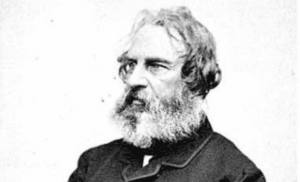When I was a church teen in the 1990s, one of hottest new Christian bands was Third Day. The name seemed like a riff on the mainstream band Third Eye Blind, but we all know where it really came from. According to Paul’s gospel, Christ was “raised on the third day in accordance with the Scriptures.” This is “of first importance” (1 Cor. 15:3–5).
We all know that Christ rose on the third day. But we probably aren’t as familiar with the latter half of Paul’s statement, namely, that Christ was “raised on the third day in accordance with the Scriptures” (1 Cor. 15:4). This wasn’t just something that happened in history; it was also prophesied in the Old Testament. Jesus himself says the same thing in Luke 24:46: “Thus it is written, that the Christ should suffer and on the third day rise from the dead.”
Which raises the question, where? Where is it written that Christ would rise on the third day? To find the answer, we must remember that the Old Testament has more than one way of pointing to Christ. We often think first of explicit predictions (e.g., Mic. 5:2). But we come up dry in our search for “Messiah raised on the third day” predictions. Because as far as I know, there are none.
The Old Testament has more than one way of pointing to Christ.
But the Old Testament also points to Christ through typological patterns, such as the slaying of the Passover lamb and the building of the tabernacle (1 Cor. 5:7; John 1:14). These are also things that Jesus fulfills. And I believe the “third day” Scriptures that Paul alludes to in 1 Corinthians 15:4 fall into this category.
In the Old Testament we find a pattern of God doing big things on the third day. Redemptive things. Revelatory things. And yes, resurrection things. Here are four examples.
1. Sparing Isaac
We’re probably all familiar with the story of Abraham offering up Isaac (Genesis 22). It was an excruciating test of Abraham’s faith, as God commanded him to do the unthinkable, only to provide a substitute at the last minute.
This event is a picture of God offering up Jesus on Good Friday. Isaac is described as Abraham’s “only son, whom he loved” (Gen. 22:2; John 3:16). He’s seen carrying the wood on which he would be slain (Gen. 22:6; John 19:17). And when he asks his father, “Here is the wood but where is the lamb?” Abraham replies, “God will provide for himself the lamb for a burnt offering” (Gen. 22:7–8). He would indeed. Whereas God spared Abraham’s son, he didn’t spare his own Son, but delivered him up for us all (Rom. 8:32).
But there’s more. The story is also a picture of Jesus’s resurrection. Abraham tells his servant that both he and Isaac will return (Gen. 22:5). The writer of Hebrews seems to infer from this that Abraham believed God would raise Isaac from the dead: “He considered that God was able even to raise him from the dead, from which, figuratively speaking, he did receive him back” (Heb. 11:19).
Figuratively speaking, Isaac was offered up. And figuratively speaking, he was raised from the dead.
Genesis 22 describes the time frame for Isaac’s figurative death and resurrection:
So Abraham rose early in the morning, saddled his donkey, and took two of his young men with him, and his son Isaac. And he . . . went to the place of which God had told him. On the third day Abraham lifted up his eyes and saw the place from afar. (Gen. 22:3–4)
This is when it went down. The typology isn’t precise, of course. For Isaac, this all happened on the same day (not on a Friday and a Sunday). Still, what happened to Jesus literally happened to Isaac figuratively: His father received him back from the dead. And according to Genesis 22:4, it happened on the third day.
2. Descending on Sinai
One of the greatest manifestations of God’s presence in the entire Old Testament was when God descended on Mount Sinai. This was a pivotal event, as God delivered his Law to those whom he had redeemed. It was something those who witnessed it would never forget.
In the Old Testament we find a pattern of God doing big things on the third day. Redemptive things. Revelatory things. And yes, resurrection things.
God announces the event’s time frame in Exodus 19. When the people have finally arrived at Mount Sinai, he tells Moses:
Go to the people and consecrate them today and tomorrow, and let them wash their garments and be ready for the third day. For on the third day the LORD will come down on Mount Sinai in the sight of all the people. (Ex. 19:10–11)
And that’s exactly what happened.
This was the greatest of all divine manifestations so far—a day never to be forgotten. And it happened “on the third day.”
3. Raising Israel
The regathering of God’s people from the Babylonian exile is sometimes described as a resurrection (Ezek. 37:11–14). Hosea 6:2 describes the time frame of this resurrection:
Come, let us return to the LORD;
for he has torn us, that he may heal us;
he has struck us down, and he will bind us up.
After two days he will revive us;
on the third day he will raise us up,
that we may live before him. (Hos. 6:1–2)
After they had borne God’s wrath, being cut down and killed in the exile (Isa. 6:11–13; 40:1–2), God promises to raise them up on the third day.
Of course, the reference here is to Israel being raised, not to the Messiah. But Jesus is the true Israel, the ultimate offspring of Abraham. And like Israel, God raised him up on the third day (for a close parallel, see Matt. 2:15’s use of Hos. 11:1).
4. Saving Jonah
The story of Jonah is well known—at least parts of it. We all know he got swallowed by a big fish, and we all know he eventually came out alive and became an instrument of Nineveh’s salvation.
The author gives us the time frame for how long Jonah was in the fish’s belly: “And Jonah was in the belly of the fish three days and three nights” (Jon. 1:17). The mention of this time frame is a strong hint that after three days Jonah will rise from what he himself refers to as “the belly of Sheol” (Jon. 2:2), the Hebrew word for the place of the dead (“Hades” in Greek).
It should strengthen our faith when we consider that God designed all of history with Jesus at the center, with every third day deliverance pointing directly to him.
You may question my previous examples. But in this case, Jesus connects the typological dots for us, drawing the parallel between Jonah’s deliverance from Sheol and his:
An evil and adulterous generation seeks for a sign, but no sign will be given to it except the sign of the prophet Jonah. For just as Jonah was three days and three nights in the belly of the great fish, so will the Son of Man be three days and three nights in the heart of the earth. (Matt. 12:39–40)
Don’t get hung up on the fact that there weren’t literally three nights between Jesus’s death and resurrection. The Jews counted days inclusively—the fact that Jesus was dead during parts of three separate days (Friday, Saturday, and Sunday) was enough in their minds to justify the language of “three days and three nights.”
The point is that just as Jonah got spat out of Hades on the third day, so did Jesus (Jonah 2:2; Acts 2:27). And just as Jonah became a sign to the people of Nineveh, so Jesus became a sign to his generation (Luke 11:30).
In Accordance with the Scriptures
When Paul says that Christ was raised on the third day in accordance with the Scriptures, I believe he had passages like these in mind—and there are more besides (2 Kings 20:5; Est. 5:1). Admittedly, only the Jonah passage is explicitly mentioned in the New Testament. But rather than limiting us in drawing connections from the Old Testament, Jesus’s use of Jonah 1:17 should teach us how to interpret similar passages that aren’t explicitly mentioned.
The empty tomb shouldn’t have been a surprise, especially coming when it did. It’s not as though the Israelites hadn’t been prepared. Not only had Jesus repeatedly told them (Mark 8:31; 9:31; 10:34), but God also had been working wonders on the third day for millennia. And it wasn’t by accident. On the contrary, it should strengthen our faith when we consider that God designed all of history with Jesus at the center, with every third-day deliverance pointing directly to him.
Risen and reigning, Jesus is supreme. But he will not be alone; he is only the firstfruits. And someday, “figuratively speaking,” the third day is coming for us all. Remember that this Easter.
Involved in Women’s Ministry? Add This to Your Discipleship Tool Kit.
 We need one another. Yet we don’t always know how to develop deep relationships to help us grow in the Christian life. Younger believers benefit from the guidance and wisdom of more mature saints as their faith deepens. But too often, potential mentors lack clarity and training on how to engage in discipling those they can influence.
We need one another. Yet we don’t always know how to develop deep relationships to help us grow in the Christian life. Younger believers benefit from the guidance and wisdom of more mature saints as their faith deepens. But too often, potential mentors lack clarity and training on how to engage in discipling those they can influence.
Whether you’re longing to find a spiritual mentor or hoping to serve as a guide for someone else, we have a FREE resource to encourage and equip you. In Growing Together: Taking Mentoring Beyond Small Talk and Prayer Requests, Melissa Kruger, TGC’s vice president of discipleship programming, offers encouraging lessons to guide conversations that promote spiritual growth in both the mentee and mentor.

































